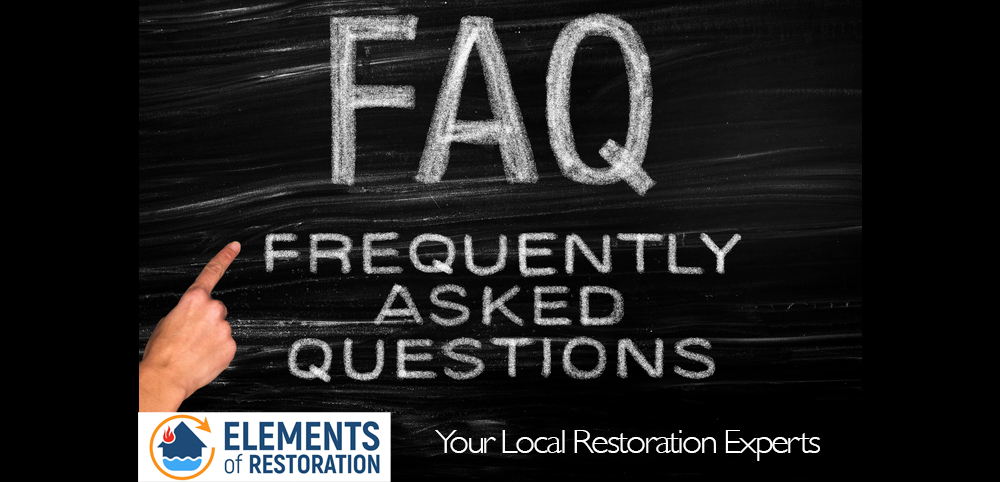Water damage can be overwhelming, but knowing what to expect can help ease the stress. Here are some frequently asked questions to guide you through the water damage process.
What Should I Do Immediately After Water Damage Occurs?
it’s crucial to take several key steps to minimize further damage and start the restoration process. First, ensure your safety by turning off the electricity in affected areas to prevent electrical hazards. Next, stop the source of water if possible, such as shutting off the main water supply or fixing a leak. Remove any valuable items and move them to a dry area, and use towels or mops to absorb excess water. If the damage is extensive, contact a professional water damage restoration company for a thorough assessment and remediation.
How Quickly Should Water Damage Be Addressed?
Water damage should be addressed as quickly as possible, ideally within 24 to 48 hours, to prevent further structural damage and mold growth. Prompt action helps mitigate the extent of damage and ensures a more effective restoration process.
What Are the Common Causes of Water Damage?
Water damage can result from various sources, including burst or leaky pipes, roof leaks, and faulty plumbing fixtures. Other common causes include flooding from heavy rainfall or storms, appliance malfunctions, sump pump failures, clogged gutters, and high indoor humidity. Addressing these issues promptly through regular maintenance and inspections can help prevent significant damage and protect your property.
What Does the Water Damage Restoration Process Involve?
The process involves:
- Water Extraction: Removing standing water.
- Drying and Dehumidification: Using specialized equipment to dry affected areas.
- Cleaning and Sanitizing: Cleaning personal belongings and sanitizing affected areas.
- Restoration: Repairing or replacing damaged materials and rebuilding as needed.
Can I Handle Water Damage Cleanup Myself?
While minor spills can be managed, significant water damage requires professional expertise to ensure thorough drying, mold prevention, and structural safety. If the water damage is extensive, involves contaminated water, or affects structural components of your home, it’s best to hire a professional. Additionally, if mold has already started to grow, professional remediation is necessary.
Will My Insurance Cover Water Damage Restoration?
Whether your insurance covers water damage restoration depends on the specifics of your policy and the cause of the damage. Most homeowner’s insurance policies cover water damage resulting from sudden and accidental incidents, such as burst pipes or a malfunctioning appliance. However, coverage may be limited for issues resulting from poor maintenance, such as long-term leaks or damage from flooding. It’s essential to review your policy details and consult with your insurance provider to understand your coverage and file a claim accurately. If you need assistance with navigating insurance claims, many water damage restoration companies can provide guidance and support.
How Long Does the Water Damage Restoration Process Take?
The timeline varies based on the extent of the damage. Initial water extraction and drying may take a few days, while full restoration, including repairs, can take several weeks.
How Can I Prevent Water Damage in the Future?
Regular maintenance of plumbing, appliances, and HVAC systems, proper sealing of windows and roofs, and installing sump pumps and backflow valves can help prevent water damage. Regular inspections and prompt repairs are key.
What Should I Do During a Flood?
During a flood, prioritize safety by evacuating if instructed. Avoid floodwaters as they can be contaminated. Once it’s safe, document the damage and contact your insurance company. Reach out to a highly-rated restoration company for water mitigation and cleanup.
What is Water Mitigation?
Water mitigation involves preventing further water damage after an initial incident. This includes removing standing water, drying affected areas, and taking steps to prevent mold growth. It’s a crucial first step in the restoration process.
How Can I Detect Water Damaged Drywall?
Look for discoloration, such as yellow, brown, or dark stains, on your walls or ceiling. Warping, bubbling, or peeling paint are also signs. Additionally, if the drywall feels soft or spongy to the touch, it may be water damaged. A musty odor often indicates hidden water damage and potential mold growth. If you notice any of these signs, it’s crucial to address the issue promptly to prevent further damage and potential health hazards. See more drywall tips from Elements of Restoration.
How does your company detect hidden moisture behind walls or under floors?
We use advanced tools to detect hidden moisture behind walls or under floors. Our primary method involves FLIR thermal imaging cameras, which identify temperature variations indicating moisture presence. We also use moisture meters to measure water content in materials, borescopes for inspecting confined spaces, and hygrometers to monitor indoor humidity levels. Combining these technologies allows us to accurately locate and address both visible and concealed water damage, ensuring a thorough and effective restoration process. If you suspect hidden moisture, contact us for a professional assessment!
Why is Professional Water Damage Restoration Important?
Professional restoration ensures thorough drying, mold prevention, and structural integrity. Experts have the right equipment and knowledge to handle the complexities of water damage, providing peace of mind and protecting your property.
Why Choose Elements of Restoration?
Elements of Restoration is IICRC certified with a proven track record of excellent customer service. We offer 24/7 emergency response in Central Texas including Austin, Pflugerville, Round Rock, Georgetown, and more. We use state-of-the-art equipment, and are committed to restoring your property efficiently and effectively.
For more detailed information about our company, Call us at 512-550-0645 visit our website.
Stay informed and prepared by understanding these key aspects of water damage restoration, and remember, Elements of Restoration is here to help when you need us most. Follow us on Facebook for more updates!


